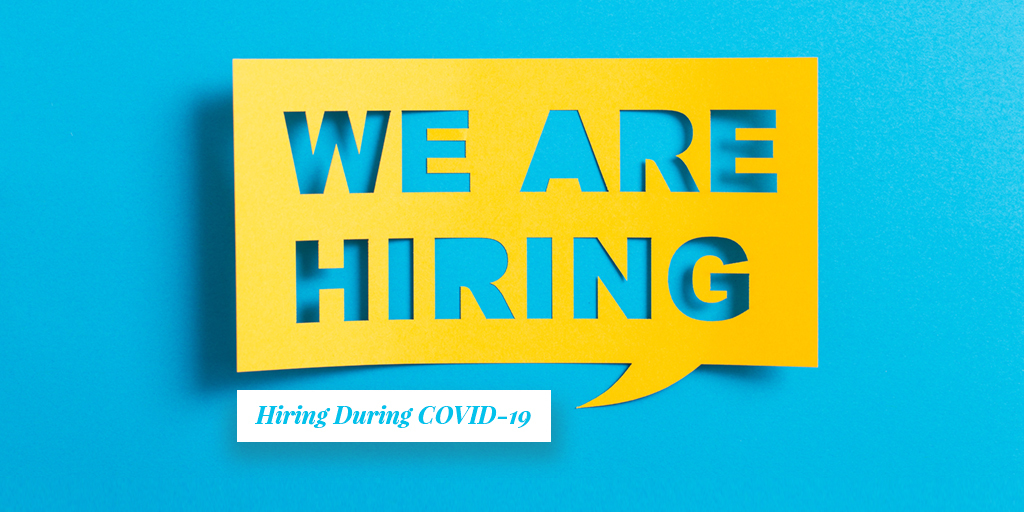This article was originally published on Entrepreneur, and is adapted from Desmond's original guest post.
Is it just me, or is it a bit strange to watch a movie and see strangers shaking hands as they meet? During this time of the coronavirus pandemic, that simple gesture isn’t going to be a part of job interviews or hiring any time soon. COVID-19 has quickly ushered in a new era of contactless hiring and onboarding for businesses looking to recruit talent.
While large tech companies may have already mastered virtual interviews and training over the last decade, many smaller companies are now finding themselves grappling with this new reality. So here are some general tips that businesses of any size can employ to better handle contactless hiring and onboarding.
1. Make video interviews one click
As every industry puts in-person job interviews on hold and pivots to video, many employers are ignoring the KISS principle. Some companies are forcing interviewees to use complicated video chat apps that often involve either downloading a new app or program to their devices. While this might be fine for interviewing for a tech-savvy position, it can be a hassle for many others who may not have the right device or aptitude with software. And for hiring large numbers of entry-level or hourly workers (ie. grocery workers), any barrier to entry can cause prospective employees to skip out on the interview process, leaving you with a higher no-show rate.
To combat this, make logging onto video interviews as one-click as possible. If the candidate doesn’t have to download anything new, that’s preferable. Also keep in mind that the best device many will have are their mobile phones, so pick a platform that works great on smartphones. Zoom might be the most well known, but test out what else may work for your needs and audience. Google Meet is a convenient option. Anyone with an iPhone has Facetime, and you can use it with your company email instead of your phone number.
Finally, don’t just include the meeting link in a calendar invite. Texting the link can make it much simpler for candidates to click from their devices at the appropriate time. And remember to brush up on your video interviewing technique before starting.
2. Have a methodology to send, receive, and store virtual documents.
For decades, people have been saying we’re headed toward a paperless office and this pandemic might be what pushes us into that reality. With virtual hiring, candidates will have to receive and send back signed paperwork multiple times. Sure, you can email them a PDF to print out and sign and scan and email back… but there are better ways of doing it.
A simple way to get virtual paperwork done is to create editable PDFs that both you and your new hires can fill in with many PDF readers, even on their mobile device (which are free on their end). This way, there is no printing and rescanning involved. Once you receive these forms, save them in virtual folders for each employee and always, always create a backup that lives on a secure cloud server. Too many times, important employee files have been lost due to a single drive failure, causing headaches for everyone involved.
A more robust way is to use a hiring platform that allows you to electronically send and manage all your offer letters, HR docs, W-2 or W-4 documents, etc. This is a more hands-off approach since practically everything is automated, leaving less room for human error.
3. Use training videos to onboard.
Virtual onboarding is all about creating and distributing good training videos to your new employees. And yes, they are effective. A study showed that videos were more effective than reading materials for training and refreshing/reinforcing purposes. While there is no replacement for in-person, hands-on training, training videos are often the next best thing.
Creating quality training videos can be an entire ebook in of itself. There are a lot of factors that make videos engaging and actually educational, instead of boring new hires. But there are a few key tips to keep in mind:
-
Keep them short and to the point. In the study linked above, videos under 15 minutes were recommended. 5-10 minutes is the sweet spot. You’d be surprised just how much information you can pack into a five-minute video if the video is well thought-out.
-
Keep it interactive. The more engaging the onboarding process can be, the better. Perhaps you don’t have the ability to create interactive videos at the moment. At the very least, having a live virtual meeting to discuss training modules with other coworkers can provide much needed interaction.
-
Keep them accountable. For best training, and not to mention legal reasons, it’s important to keep hires accountable to complete their onboarding. Post-video quizzes and signed statements of training completion are a must. If your platform prevents videos from being skipped forward, use this option.
4. Establish communication and a sense of team quickly.
Starting a new job at a new company can feel isolating when you can’t physically meet your supervisor or teammates. Remote workers tend to not “buy in” to company spirit and culture due to this perceived disconnect. This is a more serious matter than many business owners realize. A lack of loyalty can make your turnover rate skyrocket unless you put in the effort to make people feel like they are part of the team.
Establish open communications with new hires right away. This can be a Slack channel during the work day, to holding “office hours” if they have any questions for you as they get started. Telling them, “Hey, I’ll be available during Friday lunch if you want to do a quick video call about anything,” can go a long way to establishing trust and camaraderie.
For team bonding, informal video hangouts at the end of the week can be useful depending on the sort of company culture you want to establish. Or, consider sending out “welcome boxes” with some physical company merch when they come onboard. Companies today are getting creative by sending out dinner kits and cooking together, or sending mixology kits and learning to make cocktails together.
The more you can make the virtual feel not as virtual, the more these new onboarded employees can become a trusted part of your team.
For more tips and information on contactless hiring, visit the Workstream blog. Workstream is an all-in-one hiring and onboarding platform designed for ease of use and efficiency.



